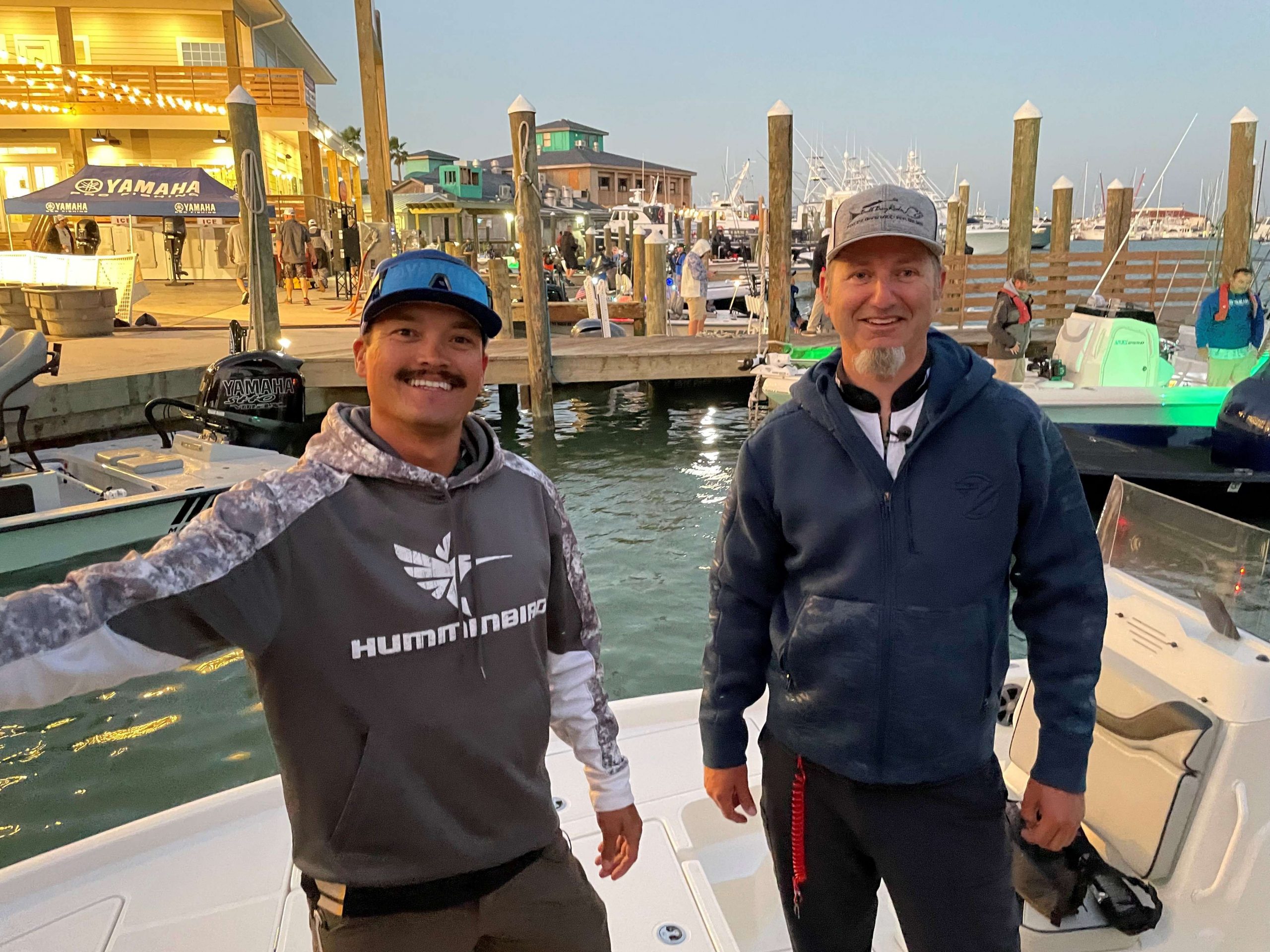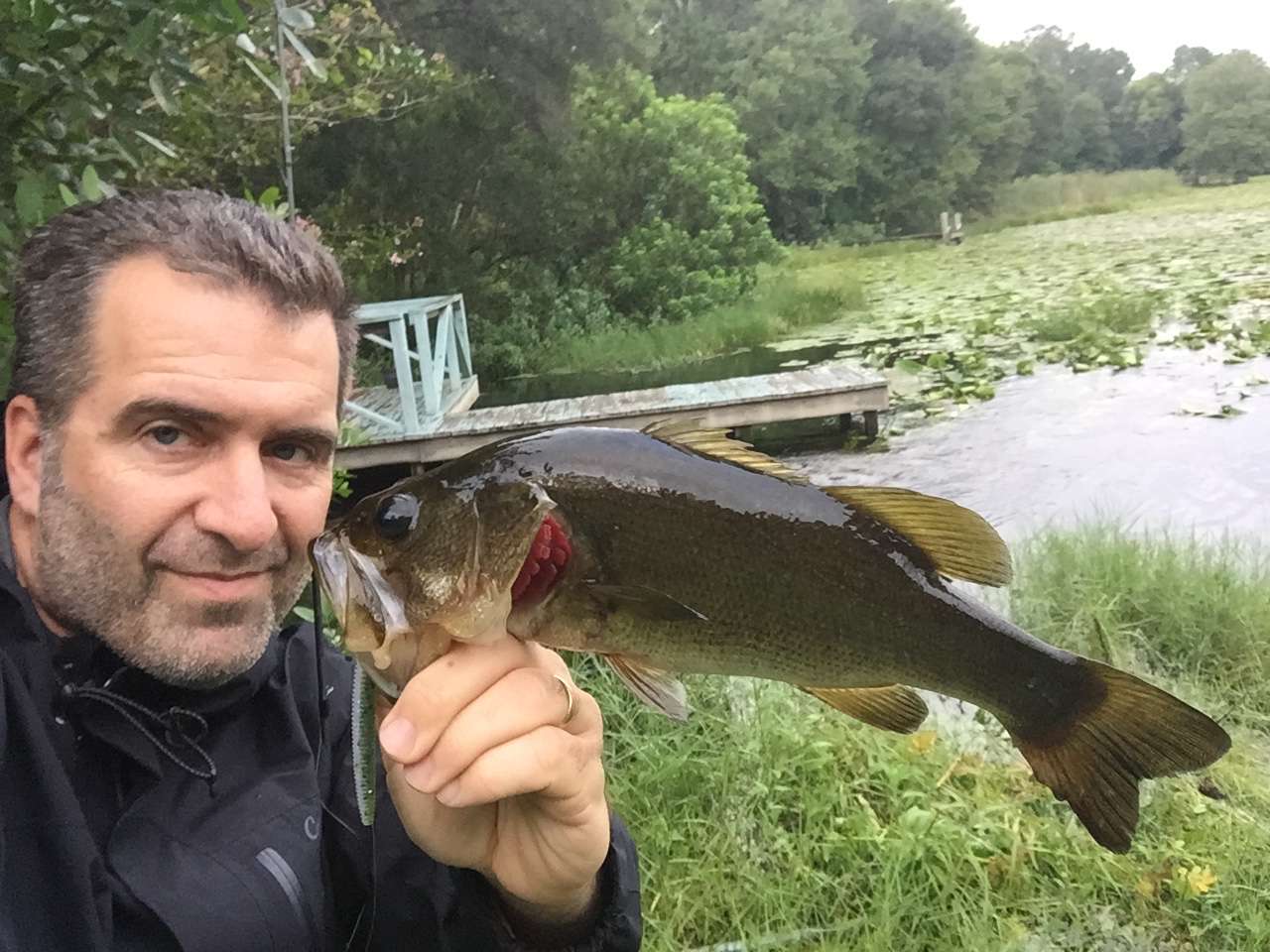
Sometimes you go get ‘em; other times, you go where they’re headed and let ‘em come to you. That’s redfishing, and diversity is what keeps the pursuit of these crimson crushers interesting.
We saw this during the 2021 Yamaha Bassmaster Redfish Cup Championship presented by Skeeter, which assembled a field of top-tier redfish competitors with Bassmaster pros for three days of competition out of Port Aransas, Texas. This year’s tournament (Nov. 4-6) will deliver a new production with a few familiar faces, along with fresh ones. Nevertheless, reflecting on that 2021 event will help shape the new outlook.
There were several different strategies, but most fell into one of two general plans: Working broad areas to pick off fish one at a time, or hunting down well-defined schools or smaller pods.
The former involved active casting to cover water, while the latter was more visual — holding fire until rippling water, wakes, pushes or tailing/surfacing reds offered clear targets. Both strategies have merit and tournament observers no doubt picked up a few pointers from the event coverage and the anglers’ explanations.
As it turned out, the gathering strategy proved victorious, as Elite star Chris Zaldain partnered with decorated Redfish pro Ryan Rickard to take home the trophy. Theirs was a game plan anchored in the clicheed, yet firmly relevant real estate principle of location, location, location.
Far and wide
Zaldain and Rickard devoted their entire tournament to a shallow Laguna Madre flat on the east side of Padre Island, about a mile and a half south of the Highway 358 Bridge. They targeted three main areas comprising a mix of grass and sandy depressions that dropped to about 2 1/2 feet.
“The redfish were feeding on the shallow flats and then they’d drop into these sandy holes,” Zaldain said during his post-event interview. “We would drift up to each of these areas and make bomb casts until we hooked a fish, then we would (anchor) and fan cast the area.”
Following a solid first-day weight of 14-10 (two fish), the winners struggled in the wake of a small front that brought high pressure and big north winds that limited them to a Day 2 catch of 11-5. Day 3 delivered the warmth and light southerly breeze that reignited their flat and delivered a banner day with a winning limit of 17-5.
On Days 1 and 3, abundant mullet encouraged the winners, as redfish often run with the vegetarian mullet to pick off any crustaceans or finfish they spook out of the grass. Zaldain caught their fish on a mix of jigs with shad tails, swimbaits and spoons.
Notably, Zaldain’s wife Trait Zaldain partnered with Louisiana reds pro Matt McCabe and the two fished a similar pattern and fared well by throwing Chatterbaits.
The hunters
Here’s a look at some of the teams that went looking for their fish.
The hole truth: Turning in the event’s heaviest two-fish limit — 18-3 — second-place finishers, Elite Derek Hudnall and IFA Redfish Tour veteran Redfish pro Ron Hueston, targeted grass flats with sandy potholes. A classic inshore hunting technique, they hopped from spot to spot in search of one good fish at a time.
Protected shores: Similarly, Day 2 leaders and Elite Redfish Trail pros Travis Land and former NFL tight end Nicky Savoie spent most of their time in Mesquite Bay on the east side of Matagorda Island. Their main pattern involved sight fishing reds as they rose from deep water to feed on a shallow edge. When the second day brought big winds, Land and Savoie moved inside the adjacent marsh to hunt their reds in cleaner water.
Tucked away: Day 1 leaders Elite pro Mark Menendez and multispecies pro Ricky Bort did much of their work in a narrow canal far north of the takeoff site. With high banks providing strategic wind breaks, the canal presented a game of close proximity in which the anglers quietly stalked their way through shallow water and blended traditional sight fishing with the straight-up flipping techniques that Mendez routinely employs in Bassmaster Elite competition.
School’s in: Elite Redfish Trail pros Glenn Vann and Thomas Barlow probably made the fewest casts of any team in the field. Their strategy involved stalking the bay’s backwater creeks for schools of redfish that would periodically stop to feed, mostly around oyster bars. Vann and Barlow knew their best opportunities would come by leveraging a school’s feeding competition, so hunting down active groups — clearly visible in shallow water — proved most productive.
The calculation
So, hunters and gatherers — this year’s event will likely see another mix of approaches, but predicting whose methods will prove victorious would be pure speculation. Each approach may deliver when you find fish that are ready to eat.
Sometimes, it really is that simple — redfish are a gluttonous lot and baits landing on their dinner table typically connect. Perfect world aside, tournament anglers more commonly have to contend with multiple variables, the impacts of which determine a day’s fortunes.
Time management: A day of competitive fishing deals everyone a different hand of cards, but the hands of the clock govern everyone equally. That said, this consideration stands central to the hunter-gatherer debate.
When you’re moving through creeks or doing the run-and-gun thing, you can speed up, cover more area and actively try to make something happen. Conversely, staking out an area and fishing for whatever comes your way means trusting the area to produce sufficient opportunity to offset the time commitment.
Wind: Akin to bass fishing, water clarity guides the redfish game, as windy days stir shallow areas. Conversely, wind — and tides — move cleaner water into and out of various areas. Case in point: Zaldain and Rickard struggled with the big winds of Day 2 disturbed their main areas, but fared much better when a calmer final round brought clean, vibrant conditions.
Even if you’ll be fishing leeward waters, big winds increase running times and the discomfort factor. Balancing the burden, rough rides tend to discourage recreational boat traffic — always a plus.
On the positive side, a stiff wind at your back helps maximize casting distance — particularly beneficial when you’re staked out with Power-Poles or Minn Kota Raptors. On the drift, downwind casts allow you to reach wary fish before they see you, while lessening the boat’s pressure wake.
Worth a note: Stout wind tends to gather floating grass along frothy seams. The stronger the blow, the more well-defined these seams become. During windy times, Zaldain and Rickard leveraged the open gaps for snag-free casting lanes.
Lastly, wind direction can change the game. On Day 2 of last year’s event, Zaldain and Rickard struggled when super clear water made the fish super spooky. Day 3’s south wind brought just enough stain to stimulate the fish, and the bite was on.
Close quarters: Small creeks, canals, marsh ponds — you’d think the less space and depth reds have to navigate, the easier they’d be to engage. In truth, redfish in tight spaces are keenly aware of their vulnerability, so nothing short of ninja-level stealth will earn you a shot.
Third-party intrusion: Dolphins and occasionally sharks prey on redfish, so they instinctively patrol areas where they have the highest likelihood of encountering this food source. Both of these predators will venture into backwater areas, but they’re more commonly encountered on open flats.
Generally, once you here the dolphin’s distinctive blowhole exhale, your spot’s toast. Any redfish in the area has already detected the threat of these incredibly efficient hunters and that always puts them on high alert.
Opportunistic sharks are more likely to rush a hooked red, as a struggling fish presents an easier opportunity than running down a free wheeler. Frustrating, but coastal predators are part of the playing field, and just like the many other consideration, a requisite piece of the hunter-gatherer calculation.





